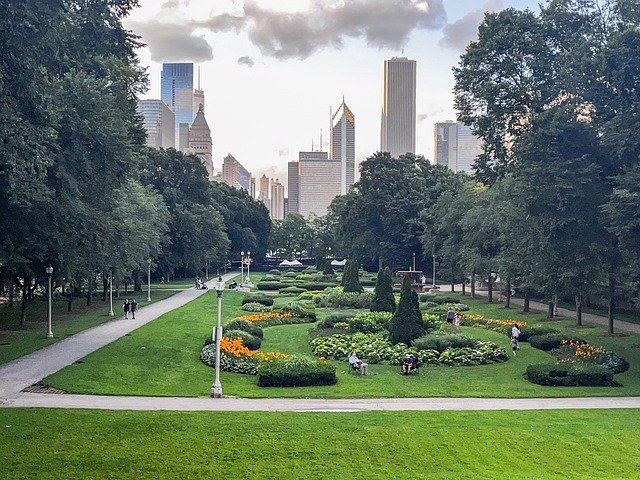Whisper Gardens: The Silent Revolution in Urban Soundscaping
Imagine stepping into your backyard, surrounded by lush greenery, only to find an unexpected oasis of tranquility. The bustling city noises fade away, replaced by a gentle rustle of leaves and the soft trickle of water. This is the magic of whisper gardens, a cutting-edge trend in landscape design that's transforming urban spaces into havens of peace and quiet.

The roots of whisper gardens can be traced back to the early 2000s when urban planners and environmental psychologists began to seriously consider the impact of noise on human well-being. As cities grew denser and noisier, the need for quiet spaces became increasingly apparent. Landscape designers took up the challenge, experimenting with various plant species, water features, and structural elements to create gardens that could effectively reduce ambient noise levels.
The Science of Sound in Nature
At the heart of whisper garden design is a deep understanding of how sound behaves in natural environments. Unlike hard surfaces that reflect sound waves, plants and organic materials tend to absorb and diffuse them. This principle is leveraged to create multi-layered landscapes that effectively trap and dissipate noise.
Key elements in whisper gardens include:
-
Dense foliage: Trees and shrubs with thick, broad leaves are particularly effective at absorbing high-frequency sounds.
-
Textured surfaces: Bark, rocks, and uneven ground help to break up sound waves, reducing their intensity.
-
Water features: The gentle sound of flowing water can mask unwanted noise while providing a soothing auditory experience.
-
Sound-absorbing materials: Specially designed acoustic panels, often disguised as natural elements, can be incorporated to further reduce noise levels.
Designing for Silence
Creating a whisper garden is as much an art as it is a science. Landscape architects must carefully consider the specific noise challenges of each site and design a space that not only reduces unwanted sounds but also creates a visually appealing and functional environment.
One popular approach is the creation of sound barriers using a combination of plants and structures. For example, a row of evergreen trees might be planted alongside a living wall covered in trailing vines. This not only provides a visual screen but also creates multiple layers of sound-absorbing surfaces.
Water features play a crucial role in many whisper gardens. From simple fountains to elaborate cascades, the sound of moving water can effectively mask traffic noise and other urban disturbances. Designers often use the principle of white noise, creating water features that produce a consistent, broad-spectrum sound that’s pleasant to the ear and effective at drowning out less desirable noises.
The Plant Palette of Peace
Selecting the right plants is crucial in creating an effective whisper garden. While any vegetation can help to some degree, certain species are particularly well-suited to the task of sound absorption and diffusion.
Bamboo, with its dense growth habit and flexible stems, is a favorite among whisper garden designers. It not only absorbs sound effectively but also creates a soothing rustling sound in the breeze. Evergreen trees like pine and spruce provide year-round noise reduction, while deciduous species with large leaves, such as maples and oaks, offer excellent sound absorption during the growing season.
Ground covers and low-growing plants also play an important role. Moss, for example, is an excellent sound absorber and can be used to create soft, quiet pathways. Ferns and hostas, with their broad leaves, help to create a multi-layered understory that further traps and dissipates sound waves.
Beyond Noise Reduction: The Multisensory Experience
While the primary goal of whisper gardens is to create quiet spaces, designers are increasingly focusing on the overall sensory experience. The concept of soundscaping – deliberately shaping the acoustic environment – is being integrated with traditional landscape design principles to create immersive, multi-sensory environments.
Scent plays a crucial role in these gardens, with fragrant plants like lavender, jasmine, and herbs strategically placed to enhance the sense of calm and well-being. Tactile experiences are also important, with designers incorporating a variety of textures in both plant materials and hardscaping elements.
Visual elements are carefully considered to reinforce the sense of tranquility. Soft, muted color palettes are often favored, with an emphasis on greens and blues that have been shown to have a calming effect. The overall layout of the garden is typically designed to create a sense of enclosure and privacy, further enhancing the feeling of escape from the urban environment.
The Future of Urban Tranquility
As cities continue to grow and densify, the demand for quiet spaces is likely to increase. Whisper gardens offer a promising solution, providing not just noise reduction but also a host of other benefits including improved air quality, increased biodiversity, and enhanced mental well-being.
Looking ahead, we can expect to see whisper garden principles applied on a larger scale, with entire neighborhoods and urban districts designed with sound reduction in mind. The integration of smart technology, such as adaptive noise-cancelling systems and real-time acoustic monitoring, may further enhance the effectiveness of these spaces.
In a world that’s increasingly noisy and fast-paced, whisper gardens offer a much-needed respite. They remind us of the power of nature to heal and restore, providing a blueprint for creating urban environments that are not just livable, but truly nourishing for body and soul. As this trend continues to grow, we may find that the cities of the future are not only greener, but also significantly quieter, thanks to the silent revolution of whisper gardens.





